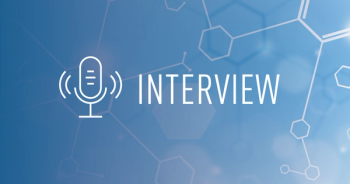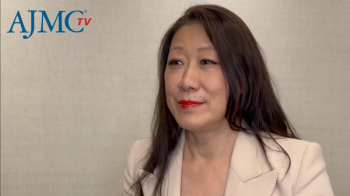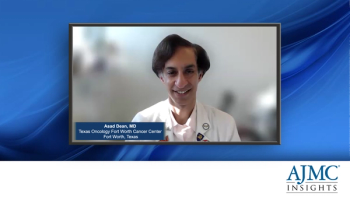
- October 2015
- Volume 21
- Issue SP14
Financial Toxicity and the Young Adult Cancer Survivor
The financial aftereffects of cancer have a tremendous impact on young adults as they move forward with their lives after treatment.
There are currently 630,000 young adults (YAs) in the United States with a history of cancer.1 Due to the overwhelming costs of cancer, many find themselves struggling financially post treatment—facing ruined credit, depleted savings, looming homelessness, and other dire circumstances.
Although “financial toxicity”2 is finally being recognized as a legitimate and common after-effect of cancer treatment (thanks to 2014’s 60 Minutes piece on the cost of cancer drugs and the team of doctors who recently published their case for lower costs3), we at The Samfund for Young Adult Survivors of Cancer have seen for over a decade how cancer can derail the financial health of YAs. In many ways, it is their life stage—more so than their specific diagnosis or treatment—that complicates their financial recovery: their schooling has been interrupted, their careers are stalled, and moving forward feels impossible. Compounding their struggles is the dearth of age-specific financial support services.
The Samfund is proud to be the first and largest organization in the United States uniquely designed to help YAs recover from the financial impact of cancer. It was founded in 2003 by a 2-time YA cancer survivor to provide financial assistance to YAs post treatment, regardless of diagnosis or where they live. Since 2005, The Samfund has distributed close to $1.5 million in grants and provided free online support and education through its website to YA survivors across the country facing great financial need due to cancer.
Many YAs lack the employment history of older adults, lack the family support of younger children, and are caught between being too old to be covered by their parents’ insurance and too young to comfortably afford their own. As a result, many YAs face impossible decisions about which bills to pay and which to forego, whether to bankrupt themselves to pay for health insurance or risk going without, and how to keep moving forward when there are so many obstacles in their way. Finishing treatment and having the freedom to move forward with their lives should be a relief, but the sudden reality of medical bills, coupled with drained savings accounts and limited employment options, is often more daunting than celebratory.
As one Samfund grant recipient wrote, “[My last date of treatment] should have been a day to celebrate, but instead it was a day when the reality sank in. Yes, I was cancer-free, but I was also broke. From that point forward, every bill has been a struggle to face. There’s just nothing left after I’ve paid my normal personal bills of rent, car payments, grocery bills, school loans, and so on. So, the bills have accumulated. The hospital calls regularly to urge me to pay more. I always pay what I can, but that leaves me with nothing to help rebuild my savings account, to visit friends, to buy a pair of shoes, or get ahead.”
Financial Burdens Are Commonplace
Unfortunately, this sentiment is not uncommon. A study by Duke University and Dana-Farber Cancer Institute researchers found that even with insurance, cancer patients pay an average of $712 out-of-pocket for treatment-related expenses per month—an average of $8544 a year.4 For patients without insurance, the cost is exponentially higher, and the expenses continue even after treatment ends. Follow-up care for those declared cancer-free can exceed $4000 a year. Not surprisingly, this financial toxicity can lead to poor health outcomes for YAs. We have sought to improve these outcomes through our programs.
Another Samfund grant recipient wrote, “I'm always told to focus on ‘me’ and ‘getting better,’ but that is almost impossible with all of the stress of post-treatment side effects, depression, and financial burden that cancer and treatment has created in my life.”
There are additional “collateral costs” related to financial toxicity. According to the results of a survey conducted by the Association of Oncology Social Workers, 66% of cancer patients with major financial challenges suffer from depression or anxiety.5 Sixty-three percent of oncology social workers surveyed in that same study reported that financial issues reduce patients’ compliance with their cancer treatment even though that treatment is key to their recovery. Additionally, 40% of patients reported depleting their savings, almost 30% reported dealing with bill collectors, and 54% of those handling a major financial burden said it had become more difficult in the past year to afford treatment. These results were echoed in a needs assessment conducted by The Samfund, which showed that 46% of respondents were “very uncomfortable” with their financial situation and 74% struggled with reducing debt and paying monthly bills.
Provisions Within the Affordable Care Act Are a Big Help
We were greatly encouraged by the outcome of the King v Burwell case upholding the Affordable Care Act (ACA), especially because of the potential impact on the YA population. Anecdotally, we know that many YAs have gone without health insurance (pre- and post treatment) because of the cost and/or are skipping follow-up appointments because they have too many medical bills. Many say they are often embarrassed to see their doctors because they are behind on their payments.
Two of the mandates of the ACA will directly impact the ability of YA cancer survivors to get coverage: (1) they can remain on their parents’ insurance plan until age 26 years, and (2) providers can no longer deny coverage due to a preexisting condition. We have heard stories from YAs who found themselves uninsured at the time of diagnosis becoming saddled with hundreds of thousands of dollars in medical debt by the time their treatment is complete; obtaining an insurance policy with this preexisting condition was an impossibility. This policy change is completely life-altering for those who have found themselves in a similar situation after the ACA went into effect.
Jonathan S, a 31-year-old survivor of testicular cancer, told us, “With a few months left on my COBRA health insurance, I was paying nearly $650 per month for my premium. As my coverage was coming to an end, I knew no insurance company would insure me if [it] weren’t for the ACA. Because of the ACA, I have been able to purchase an affordable plan that suits all my needs.”
In spite of these positive developments, much confusion remains regarding how exchanges work, what subsidies exist, and if YAs can get quality medical care as cancer survivors. One of our goals as an organization is to educate this group about their options and their rights in terms of healthcare. To that end, we are proud to partner with Triage Cancer on a new program, Finances 101: A Toolkit for Young Adults with Cancer. This program will educate YAs with a cancer history on financial decision making at key junctures during their treatment and recovery in an effort to abate or prevent the financial toxicity so common in this age group.
EBO
We hear from many YAs who are now covered or whose premiums are now far less expensive as a result of the ACA, so we are seeing some improvement already. However, there are many who are still dealing with high deductibles and premiums that are more than they can comfortably afford or who are still without coverage. There is a lot more work to be done. An increase in marketplace options, ongoing education regarding the various available insurance options, and communication with healthcare providers on treatment costs will all contribute to improvement in health and psychosocial outcomes in this population.
Samantha Watson, MBA, is founder and CEO, The Samfund.
Michelle S. Landwehr, MPH, is COO, The Samfund.
Address for correspondence
Samantha Watson, MBA
89 South Street, Suite LL02
Boston, MA 02111
References
E-mail: sam@thesamfund.org
- DeSantis CE, Lin CC, Mariotto AB, et al. Cancer treatment and survivorship statistics, 2014. CA Cancer J Clin. 2014;64(4):252-271.
- Zafar SY, Abernethy AP. Financial toxicity, part II: how can we help with the burden of treatment-related costs? Oncology (Williston Park). 2013;27(4):253-254, 256.
- Whalen J. Doctors object to high cancer-drug prices. Wall Street Journal website. www.wsj.com/articles/doctors-object-to-high-cancer-drug-prices-1437624060. Published July 23, 2015. Accessed August 21, 2015.
- Zafar SY, Peppercorn JM, Schrag D, et al. The financial toxicity of cancer treatment: a pilot study assessing out-of-pocket expenses and the insured cancer patient's experience. Oncologist. 2013;18(4):381-390.
- Mellace J. The financial burden of cancer. Social Work Today. 2010;10(2):14.
Articles in this issue
almost 10 years ago
FDA Updates in Oncologyalmost 10 years ago
Using a Gene Expression Assay to Predict Response to NAC in Breast Canceralmost 10 years ago
Managed Care Updates in Oncologyalmost 10 years ago
The Need to Raise Awareness for Young Adult Cancer Carealmost 10 years ago
Sticking Up for the 340B Programalmost 10 years ago
Bridging the Care Gap Between Pediatric and Young Adult Canceralmost 10 years ago
Treatment of Acute Lymphoblastic Leukemia in Adolescents and Young Adultsalmost 10 years ago
Coordinated, Personalized Care to Improve AYA OutcomesNewsletter
Stay ahead of policy, cost, and value—subscribe to AJMC for expert insights at the intersection of clinical care and health economics.


















































